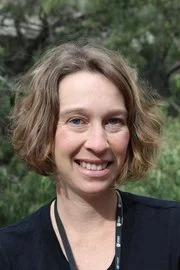Announcing AEpiA’s online Epigenetics Seminar Series
Recent Posts
Spotlight on: Melanie Eckersley-Maslin 25 November 2022
Spotlight on: Jessamy Tiffen 25 July 2022
ECR Spotlight on: Alex Woodworth 16 July 2022
Epigenetics 2022: Four weeks left for poster abstract submissions! 15 July 2022
Emma Whitelaw ECR Publication Award 30 June 2022
Epigenetics 2022 – Meet the speakers 17 June 2022
ECR Spotlight on: Kate Giles 31 May 2022
Spotlight on: Luciano Martelotto 30 May 2022
Epigenetics 2022 speakers announced 20 April 2022
Spotlight on: Hamish King 18 April 2022
ECR Spotlight on: William Schierding 6 April 2022
Spotlight on: Louise Bicknell 14 March 2022
Categories
News (57)
Opportunities (3)
Publications (7)
Spotlight on … (16)
World epi news (2)
Archived news
2022 (12)
2021 (9)
2020 (9)
2019 (1)
2018 (6)
2017 (6)
2016 (6)
2015 (17)
2014 (1)
by AEpiA | Jun 04, 2020 | News
Epigenetics Seminar Series 2020
Dr Alyson Ashe
Insights into transgenerational epigenetic inheritance from C. elegan
We are delighted to announce our new online Epigenetics Seminar Series, starting 25 June 2020. We’ve planned a fantastic program, hosted by our Committee members, with a line-up of speakers from around Australia and overseas.
Our first speaker is Dr Alyson Ashe from The University of Sydney – read about Alyson below and keep an eye on our Epigenetics Seminar Series page for details on the rest of the series.
The Seminars will be held every four weeks, on Thursdays at 12 noon (AEST). Attendance is available to all Australian Epigenetics Alliance members – so please join AEpiA for free, or check your membership here.
We look forward to seeing you all soon.
Alyson is an early career research fellow in the School of Life and Environmental Sciences at The University of Sydney. She is interested in all areas of epigenetics and small RNA molecules.
Alyson studies epigenetic regulation of gene expression: the interplay between the environment that an organism encounters during its lifetime, and the expression patterns of its genes. Importantly, these environmental signals can sometimes get passed between generations (Darwin was wrong!), and Alyson’s work is trying to understand how this occurs.
To do this Alyson mainly uses the model organism C. elegans, a small nematode worm, but is also branching out into other species such as the honey bee.


